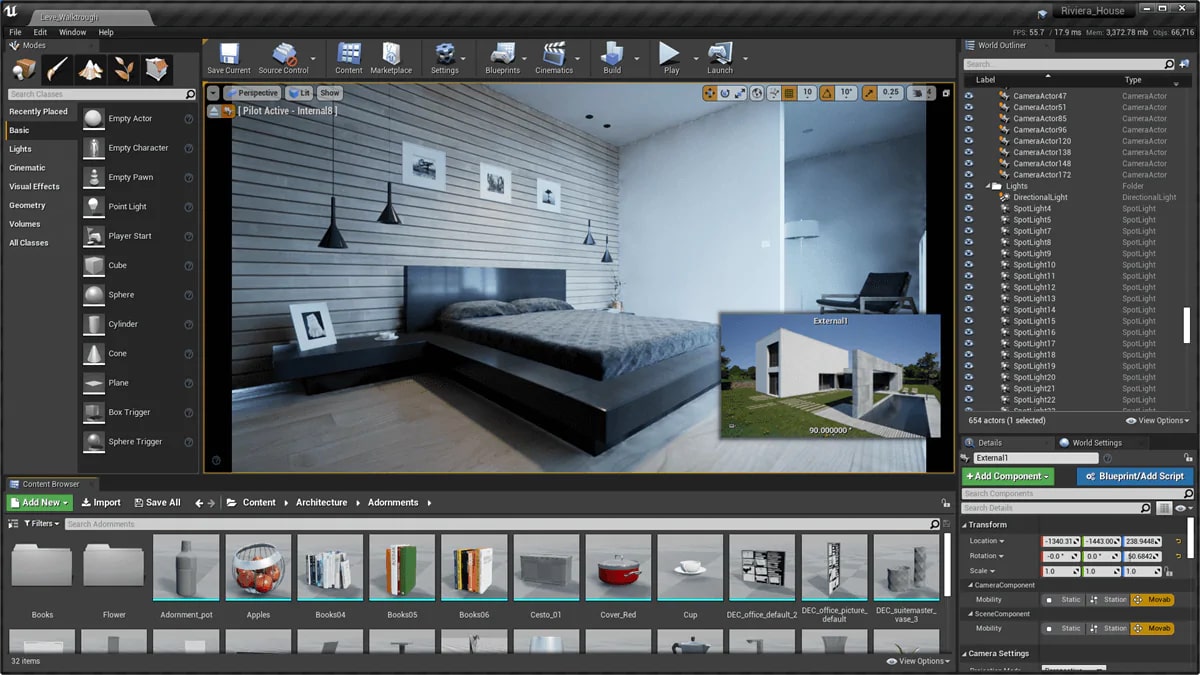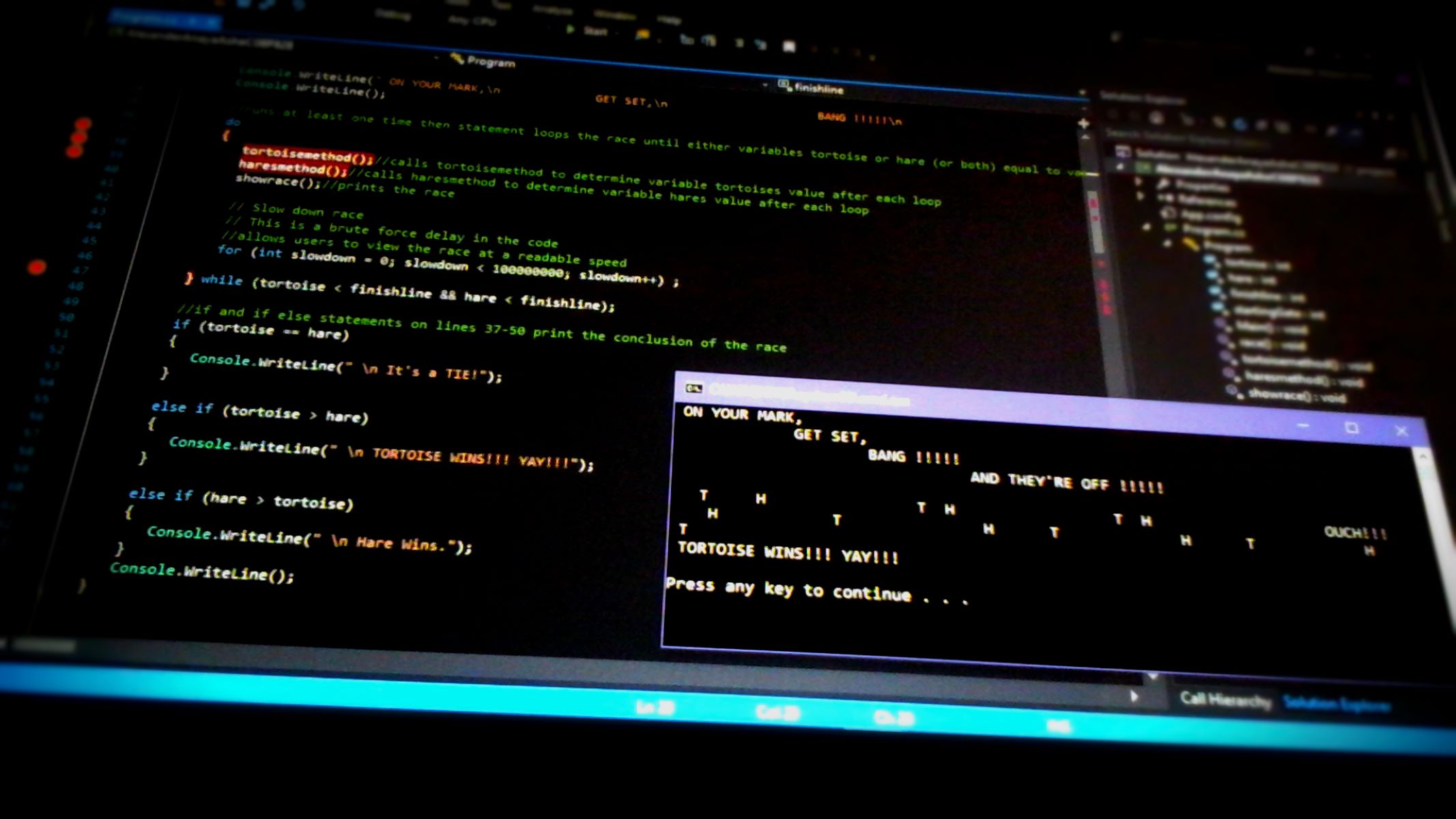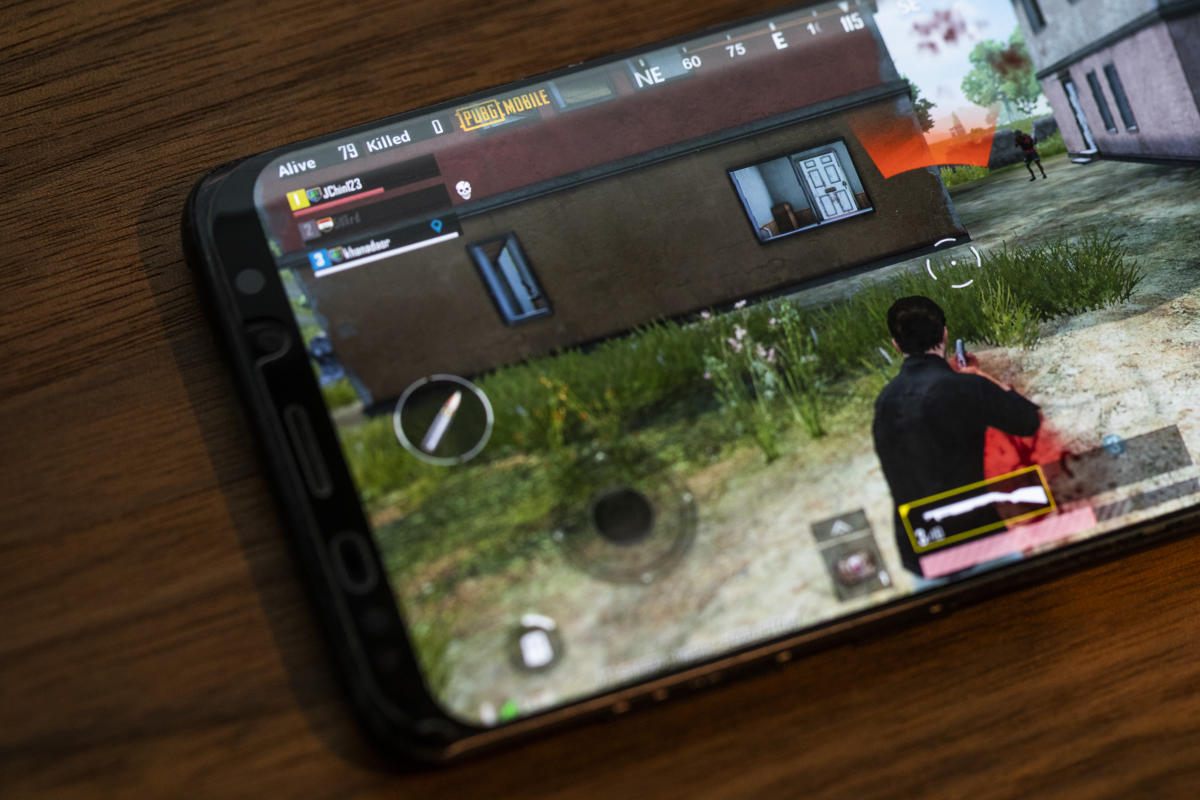Unreal Engine 5 games promise unprecedented levels of detail and photorealism for a truly immersive gaming experience. As products of the latest iteration of the popular gaming engine, these games benefit from advanced rendering, world-building, and animation features with a dash of artificial intelligence. Let’s take a look at all of the upcoming Unreal Engine 5 games and what makes these games stand out.


What Is Unreal Engine 5?
Unreal Engine 5 is the latest form of the proprietary game engine created by Epic Games. Epic Games originally announced the release of the software at the Summer Game Fest in 2020. However, it would take about a year before the preview would be released, and another year after that for the final version to come out. The final version would finally be released by early 2022, marking the nearly seventh year since the release of its predecessor, the Unreal Engine 4.
Unreal Engine 4
Unreal Engine 4 had some aspects of artificial intelligence, but it still had a hard time capturing a significant portion of the market during its release. This has to do with the fact that a majority of smaller developers preferred to use Unity, which had lowered barriers to entry and was also mobile-friendly.
On the other hand, bigger studios preferred to use their gaming engines, such as the Red Engine by CDPR or RAGE by Rockstar. Having said this, the latest iteration of the game engine is meant to turn things around for the game engine and replenish its audience.
A Giant Leap Forward
The game engine promises a significant leap forward with a selection of new and advanced features in all areas that matter, including rendering, world-building, animation, audio, and physics. Specifically, it combines some of the most advanced tools including dynamic lighting, virtualized micro-polygon geometry, complex physics, motion warping, to name a few. Moreover, the majority of the graphics creation process has been automated, saving developers a lot of time and effort.
In addition to making games look a lot better, the engine also makes it easier for developers to create next-gen games. To be more precise, it offers a much cleaner and more intuitive user interface, with easy access to an expansive library of customizable asset types and templates. Additionally, it allows multiple developers to simultaneously work on the same maps and asset types.
Epic Games intended for the software to be used to create games for next-gen gaming consoles. The list includes PlayStation 5 as well as the Xbox One/X/S.
All Unreal Engine 5 Games Confirmed So Far


Developers and gamers alike have praised the Unreal Engine 5 for its feature, touting it as a game-changer, literally and figuratively. But the proof has got to be in the pudding. And the only real way to judge the software is through the games created using it.
Here are some of the best Unreal Engine 5 games, so you can see for yourself whether the hype is real or not:
Also Read 20 Best PS5 Games You Don’t Want to Miss
1.Senua’s Saga: Hellblade II
Senua’s Saga: Hellblade II is the sequel to the Hellblade series by developer Ninja Theory. The original story centers on the character of Senua, a warrior from a prehistoric tribe in Scotland. In the original story, Senua embarks on a journey into the afterlife realm of Hel, battling both demons and monsters in an attempt to bring her dead lover back to life.
The official trailer for Hellblade II indicates that Senua is still the lead character. Although we’re not sure how this ties into the plot of the original game, since Senua was killed at the end of the first game. Moreover, there are also changes to the setting of the game, with the main character needing to travel through Iceland for a different mission.
Finally, the game will reportedly use Unreal Engine 5, which would help the psychological and fantasy elements of the game stand out.
2. Fortnite
Epic Games announced back in 2021 regarding their plans to release the popular shooting game in next-generation consoles, including PlayStation 5 and Xbox Series X. This announcement aligns with the company’s plans to transition their games into Unreal Engine 5.
Fortnite, the most popular and best-selling title under Epic Games, is bound to be the first to benefit from the transition. Having said this, fans of the game can expect to see a new and much-improved version of the game with cinematic-quality graphics and special effects.
3. ArcheAge II
ArcheAge II is a fantasy-based, sandbox-style MMORPG. The game is based on The ArcheAge Chronicles by Korean author Jeon Min-hee. The story revolves around the struggles between good and evil in a world inhabited by humans, elves, and dwarves.
While the trailer above is not the actual footage for the game, we do know that the setting will now include a new continent Nuia (West continent). Other than that, it will also include new capabilities for each quest (e.g., trading, player housing, farming, crafting), and will also introduce new races and house types not seen in the original game.
While the original game was created using Unreal Engine 4, this sequel will be made using Epic’s Unreal Engine 5.
4. Redfall
Redfall is an upcoming multiplayer first-person shooter game from Arkane Studios. The game is set in the fictional town of Redfall, Massachusetts. The quiet island town has been taken over by a vampiric presence, turning its citizens into blood-thirsty vampires. The player will have several characters to choose from, each of which possesses special abilities. Additionally, they can expect customizable load-outs, multiple weapons, level requirements, and lots of loot.
While the exact genre of the game and style of play is unknown, the official trailer for the game seems to point to a Left 4 Dead or Borderlands-inspired setting. But despite this being a horror game, the tone of the game gives away a more lighthearted and humorous approach to the genre.
Developers created Redfall using Unreal Engine 5. and will serve to demonstrate precisely what the engine has to offer. In the meantime, players can wait for the game to make its way to PC and Xbox X/S in late 2022.
5. The Matrix Awakens
The Matrix Awakens is the latest and most realistic game adaptation of the highly popular movie franchise. Based on the official trailer, the game will use the original CGI models of “The Matrix” trilogy stars Keanu Reeves and Carrie-Ann Moss. With MetaHuman editing using Unreal Engine 5, the characters look exactly like their actors in real life.
Moreover, if the demo is any indication, then players are in for a treat with the game alternating between cinematic sequences and a fast-paced third-person shooting experience. With Unreal Engine 5 at the helm, every scene looks impressively cinematic, with ultra-detailed settings and characters. This is as Matrix-like as you can get for a game about the Matrix.
6. Ill
Ill is a first-person shooting horror game that takes inspiration from the Resident Evil franchise. While the developers have yet to reveal the details of the plot, the official trailer does give away the fact that the game takes place in a zombie-infested town. Other than that, the game promises to take players through a lot of creepy and weird places, with a lot of zombies, sot kill, and shocking revelations to uncover.
Created with Unreal Engine 5, it will deliver fully immersive, next-generation game visuals and designs. Additionally, it features advanced physics with realistic gunfights and bodily effects of gunfire, as well as bodily transformations.
7. DragonQuest XII: The Flames of Fate
DragonQuest recently celebrated its 35th anniversary, and the company recently released several titles, including the DragonQuest XII: The Flames of Fate. The developers have revealed very little about the plot, and the teaser only shows the title and release date and nothing about the plot. But other sources online seem to point to a classic hero trope, where the user plays as a bodyguard protecting a rebellious princess.
The transition to Unreal Engine 5 falls in line with the company’s decision to depart from the traditional elements of the DragonQuest universe. The engine would allow the developers to shift the environment towards a more realistic, open-world design. Finally, the game is set to debut on next-generation gaming consoles, including the latest PlayStation 5 (PS5) and Xbox Series X.
8. Dreamhouse: The Game
Dreamhouse: The Game is a realistic role-playing game. The game has you play as a novice construction engineer with a dream of building your own house. However, to save money for your dream house, you would have to accept a lineup of construction projects, from renovations to house excavations.
The whole game is meant to be a realistic simulation of the house-building experience. Admittedly, the game is a lot more challenging than other house-building games due to the amount of detail you have to work with. It will take you through all the steps of building a house, from drafting a design to construction and home decoration.
Unreal Engine 5 will be running this game. And if the official trailer serves as an indication, then the engine will be adding a whole new level of photorealism and detail to an already-immersive game. Additionally, you can play the game in three different ways. In particular, you can play it as a single-player, online PvP, or online co-op. The game will soon make its debut in Linux gaming, Mac, and Windows PC.
9. Gears of War
Gears of War is another high-fantasy adventure franchise created by Epic Games. The original plot takes place in Sera. Sera is a fictional, Earth-like planet where humans are divided into two warring factions, the Coalition of Ordered Governments (COG) and the Union of Independent Republics (UIR). Mutated humans are known collectively as the Locust Horde also add to the conflict.
There are six installments under the Gears of War franchise; all created using Unreal Engine. Developers have confirmed that upcoming games will use Unreal Engine 5, which should bring radical visual upgrades to the franchise.
10. Echoes of the End
Echoes of the End is a third-person fantasy adventure with gameplay centered on narrative storytelling. The game has the player step into the shoes of Ryn, a highly trained fighter with the unique ability to manipulate matter and destroy matter. Your character will explore a lore-rich and visually stunning fantasy world built using Unreal Engine 5. The game is scheduled for release sometime in 2022, for PS5 and Xbox X/S consoles.
11. Stalker 2: Heart of Chernobyl
Stalker 2: Heart of Chernobyl is a follow-up to the original first-person shooter horror game released early in 2021. The game has you play as a member of a group of people called “stalkers.” Stalkers are like treasure hunters who explore the long-abandoned Chernobyl exclusion zone in search of objects with special properties called artifacts. The exclusion zone was once the location for top-secret experiments on people with psionic abilities until a catastrophe would cause inexplicable phenomena or anomalies.
The official trailer for the new game seems to suggest huge parallels with the plot of the first game, where you will play as part of a team of stalkers once again. But of course, the new game will have you go through new dangers in new locations with new anomalies not seen in the original game.
The game’s developer has long confirmed that they will be using Unreal Engine 5 instead of Unreal Engine 4. Additionally, they will be using motion-capture for both bodies and faces, as well as photogrammetry for creating ultra-realistic characters. The developers have confirmed the game will be available in Xbox Series X and PC sometime in 2022.
12. Black Myth: Wukong
Black Myth: Wukong is a third-person action-adventure game and an Unreal Engine 5 game. The game explores the Monkey King’s mythology, as told through the classic Chinese story the Journey to the West myth.
You’ll play as the unevolved version of the Monkey King, Sun Wukong, a staff-wielding monkey with shapeshifting abilities. In keeping with the age-old legend of the Monkey King, Sun Wukong must embark on a worldwide quest for power and immortality, battling anthropomorphic characters and armies along the way. No release date has been announced at this time, but Game Science is aiming for a PC and console release.
13. Quantum Error
Quantum Error is an upcoming sci-fi horror first-person shooter game from TeamKill, the developer team behind the survival horror game Kings of Lorn: The Fall of Ebris.
The game will have you play as Captain Thomas, a firefighter with Garboa Fire Department in San Francisco, California. In the aftermath of an attack by an unknown entity on a research facility, you and your partner Shane Costa are sent in to look for survivors as well as to stop the entities that threaten to wreak havoc on the world.
This game combines multiple horror genres into one in an Alien-meets-Resident Evil kind of way. Along with the themes are the standard trademarks of a first-person shooter game, where you can get to choose your weapons and shoot down different types of enemies along the way. Additionally, it must be noted that the trailer above is an old version, meaning that the storyline and graphics quality may have already changed.
This Unreal Engine 5 game promises to deliver 4K resolution and 60 FPS, with real-time ray tracing to make the frames look as photorealistic as possible. Developers have confirmed a 2022 release for PS4 and PS5 before Xbox.
14. New Bioshock Game
A new installment to the acclaimed first-person adventure shooter game is under development, and it will be built using Unreal Engine 5. Bioshock is set in the fictional underwater city of Rapture, a technologically advanced utopia-turned-crumbling dystopia. The underwater city falls into anarchy after the discovery of a chemical substance that gives people superhuman abilities.
The combination of high science fiction elements with moralistic commentary would propel the series to international success, making it a sci-fi classic. But more than a decade later, the game world’s visual would start to wear n age, prompting the developers to create remastered versions released in 2016. Note that the trailer above does not contain footage from the new game.
This upcoming installment will likely make or break the franchise, with Unreal Engine 5 potentially making all the difference. Nonetheless, the transition can only result in nothing less than stunning visuals and highly detailed combat.
15. Ashes of Creation
Ashes of Creation is a highly immersive high-fantasy sandbox MMORPG game from Intrepid Studios. The game’s lore focuses on a story of creation, grounded on the conflict between celestial beings called The Ten and their created race, The Ancients. The eons-long conflict between these beings would result in the creation of Verra. Verra is an Earth-like place where humans, orcs, elves, and dwarves co-exist in different territories.
The developers of the game made sure to create an elaborate world, with over 103 possible node locations. Each location has its own set of quests as well as events. Additionally, each node contains its own set of quests and adventures. As you unlock each node, you will begin to see new buildings, more NPCs, services, and the like as you go through them.
As an Unreal Engine 5 game, Ashes of Creation promises to deliver a highly detailed and more realistic environment, allowing the game to come to life. The engine also allows for mass combat scenarios, including player versus player (PvP), node sieges, castle sieges, and so on.
16. Mortal Online 2
Mortal Online 2 is the sequel to 2009’s Mortal Online, a unique first-person, medieval fantasy MMORPG. The game features an open world where players get to customize their character down to details, including race, play techniques, profession, and so on.
Mortal Online 2 doesn’t have dedicated PvP zones, just a single, open world where characters are free to explore. The game also replaces character levels with an open skill system, with a repository of over 600 skills to learn.
The creators of the Mortal Online 2 have reportedly received a subsidy from Epic Games via the Epix MegaGrant, a special program for creators who run the Unreal Engine. The grant will allow the developers to move their game from Unreal Engine 4 to Unreal Engine 5.
17. Untitled Layers of Fear
Layers of Fear is a psychological horror game. The game was created by the Bloober Team and published by Asper Media. The original game has you play as a psychologically unhinged painter who experiences strange visions while trying to finish a masterpiece. The game will take you through warped versions of the rooms in the home. And the main objective is for you to uncover the events that led to the character’s madness.
While the developers have yet to reveal the sequel’s plot, they have at least confirmed that the game will be built using Unreal Engine 5. The game will make its way to PlayStation 5 and Xbox Series X or S sometime in 2022.
18. State of Decay 3
State of Decay is an action-adventure franchise with some horror and stealth elements. The game has the player act as a leader to a small group of survivors, which will survive by exploring, scavenging, and killing zombies. It divides the more exciting bits between combat and simulation, with the players having to make decisions on how to manage scarce resources.
Developers have announced that this game in particular will be running on top of Unreal Engine 5. This comes along with the promise of improving the game’s visual quality, combat movements, as well as the overall atmosphere.
New Features to Expect from Unreal Engine 5 Games


Epic Games is aiming to convince developers to build their games with Unreal Engine 5. But to do that, their game engine has to offer better features than customized game engines on the market. Having said this, the company made sure to make their latest iteration of the engine as competitive as possible. As a result, this version of the Unreal Engine has all the recent capabilities proving once and for all its next-gen capabilities:
1. Nanite


Nanite is a virtualized micro-polygon system that allows artists to create backgrounds with massive geometric detail. In particular, each asset within the scene is composed of millions of tiny triangles. These triangles work like tiny pixels, giving each object a realistic and detailed appearance. Additionally, artists can import assets from external sources and customize them to make them fit as naturally as possible within the scene. Likewise, you can copy generic assets millions of times into your project and customize them down to the last details. But even then, your project will maintain the same frame rate.
Additionally, the feature compresses the data format to limit resource use in terms of polygon count, polygon memory, and draw count without compromising visual quality. On top of that, it also allows artists to use mesh shaders if they prefer it.
2. Lumen


Lumen is a dynamic global illumination technology that makes your lighting as natural and real as possible. The feature makes the lighting look as photorealistic as possible, adjusting automatically for the time of day (e.g., sunset or sunrise). Additionally, it produces highly photorealistic effects for specific actions, such as opening a flashlight, opening a door, or firing a bullet.
Furthermore, the feature also specializes in rendering indirect lighting. Also known as color bleeding, this feature describes a situation when a light that hits a surface picks up on the color of that surface and reflects the same onto nearby surfaces. On the other hand, you also have access to various types of mesh or vertices that you can use to block indirect lighting. In other words, it’s the tool to use when you want to add shadows to your creation.
3. MetaHuman Creator


MetaHuman Creator is a special program that helps artists create realistic models of human beings. The feature offers a large selection of pre-set body types, hairstyles, clothing, and armor. Essentially, it offers everything you need to create unique, realistic-looking characters.
You can customize your character builds down to the smallest details and customize it to perfectly fit into your environment. After which, you can proceed to export the models and animate them inside Unreal. The feature makes it as easy as possible for creators to design their characters without relying on additional software for modeling.
4. Control Rig
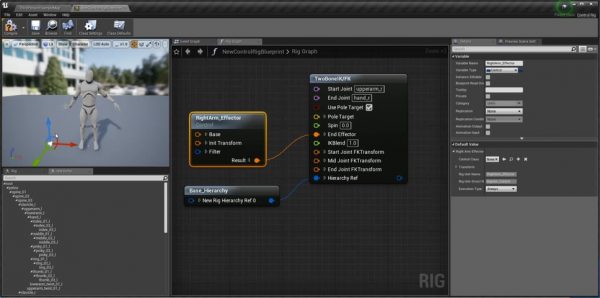

Control is an in-editor rigging tool that allows artists to control the skeletal movement of their characters for natural-looking movements. To be more precise, the feature allows artists to import skeletal mesh assets into the project, which they can then customize. Essentially, it gives artists the freedom to generate new or modify existing movements within the Unreal Editor. Additionally, unlike Blueprint, Control Rig uses its memory container called RigVM for storing data.
5. CCDIK Skeletal Control
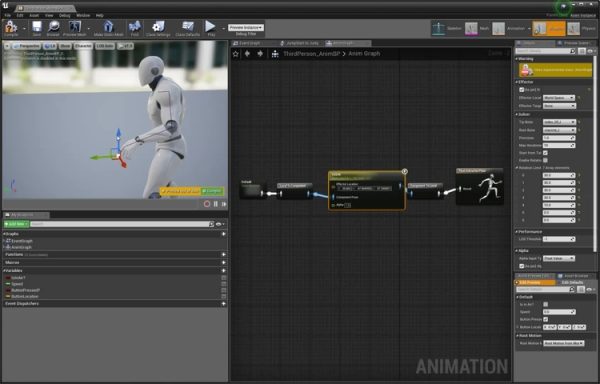

Another experimental feature connected with the Control Rig is called the CCDIK Skeletal Control node. This feature lets animators push and pull any skeleton with many effectors. For example, you can use the Power IK to have your characters move naturally in uneven terrain. You can also create customized poses to fit in closely with the combat sequence of action. Essentially, the feature helps artists create dynamic characters with human-like features and movements.
6. Motion Warping
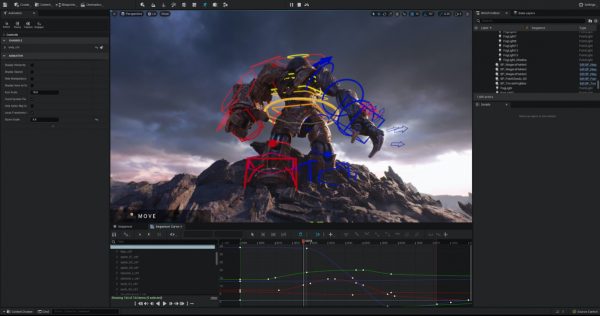

The creators of the program added another motion-related feature called motion warping. Motion warping allows the artist to adjust the character’s motion depending on the size and shape of an obstacle. More specifically, the feature allows the artist to add specific motion warping areas on the map.
Additionally, it allows artists to customize the movement of the character for each motion warping area. While the exact functions of the two features are different, both have the same goal. Specifically, its goal is to create dynamic and lifelike movements for characters.
7. World Partition
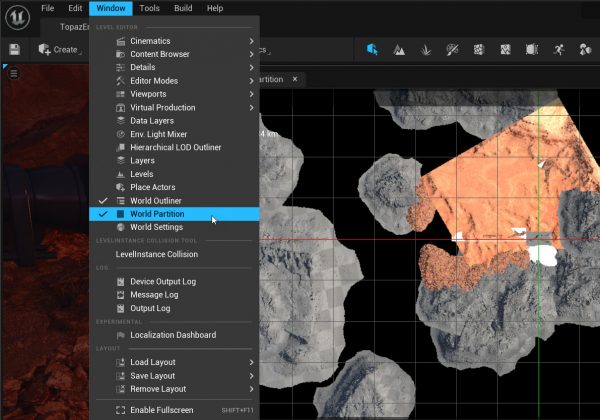

Traditional game engines normally truncate the editing process, with developers working on different sections separately. With the traditional process, developers are normally required to manually divide maps into sublevels that they have to load and unload each time. In other words, this process made it difficult to share files with other developers and prevented a whole-world view of the map.
With world partition, developers can work on a single persistent level divided into multiple grid cells instead of individual sublevels. With only a single level to work with, developers can traverse any location on the map that they want. In addition, the feature also includes an automatic loading and unloading system, which makes the process even easier for developers.
8. One File Per Actor (OFPA)
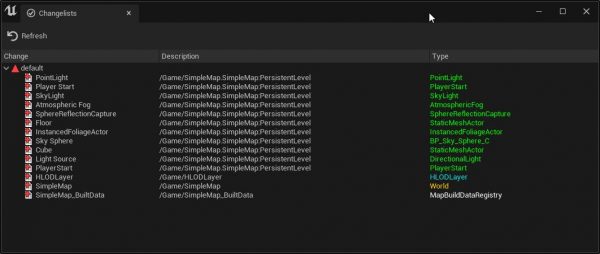

World Partition works hand in hand with another feature called One File Per Actor (OFPA). Traditionally, developers track changes at the actor level, not at the map level. As a result, a developer can only edit a single element at a time. Meanwhile, other developers are locked out of that level the work on that particular level is completed.
In contrast, Unreal Engine 5 allows multiple developers to work on the same elements simultaneously. In particular, the changes that each developer makes will no longer overlap with the changes made by other developers. For instance, this means that developers work on setting and reworking a scene simultaneously.
9. Quixel Bridge
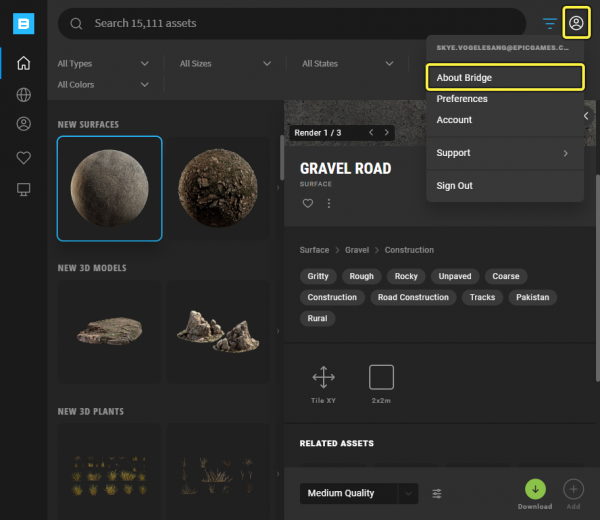

Quixel is a highly popular, free, and open access library containing pre-sets for objects within a game. For Unreal Engine 5 users, Quixel is accessible through special, standalone software called the Quixel Bridge. Quixel Bridge works similarly to the Windows File Manager in that you can search for specific assets and export them easily into your Unreal Engine project for animation.
10. MetaSounds
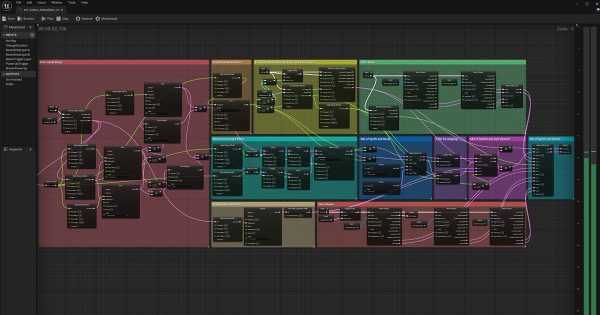

MetaSounds is a high-performance audio system that gives artists complete control over the sound generation process. The feature has a selection of sound generators and modulator widgets for highly detailed audio customization. In combination, these two features help artists to create unique and realistic sound effects to match the theme and storyline of any game.
Final Thoughts on the Upcoming Unreal Engine 5 Games


The Unreal Engine 5 has been making waves since its release, with a diverse range of Unreal Engine 5 games currently under development. Nonetheless, this is the running point for developers and gamers alike. Specifically, it will be a catalyst for a radical rethinking of their approach to games, with an ever-expanding potential for creating even better games.
Moreover, the engine is also a dream come true for most gamers, as it finally makes it possible to create games that look and feel close to reality. In summary, this is essentially a win-win situation for developers, gamers, and the industry as a whole, and there’s no going back.









